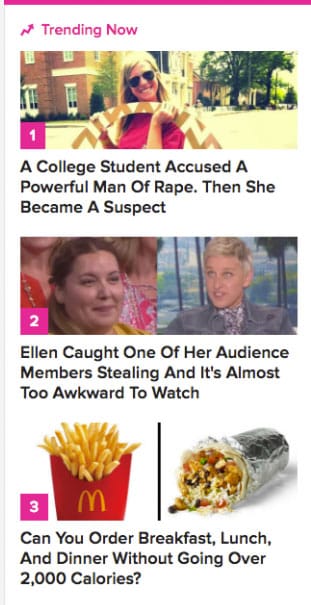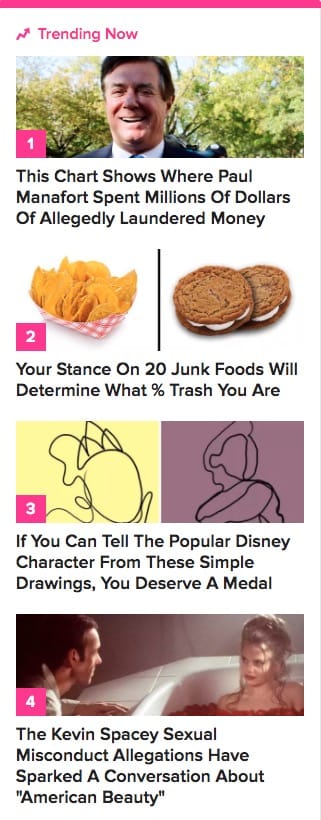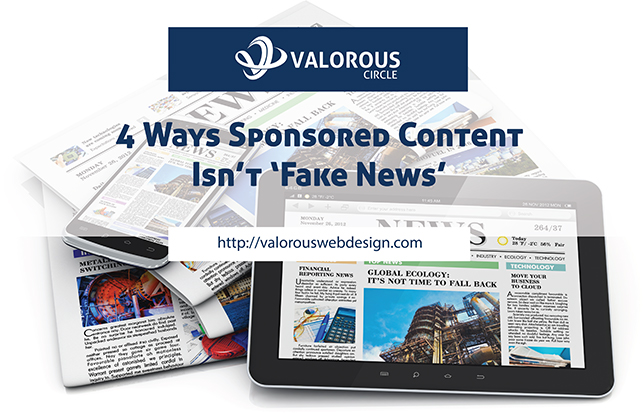No, Sponsored Content Isn’t ‘Fake News’
Sponsored content is the native advertising relationship between publisher and marketer on how to display entertaining information in the form of relevant, albeit paid, articles, videos or graphics in line with the digital editorial content already running on a given website.
 Phew! Glad we got through that together.
Phew! Glad we got through that together.
Now we must ask ourselves why we are seeing so many sponsored content stories in our news feeds.
The simple answer is that newspapers are dying and their digital counterparts are picking up the slack.
Some of you may remember a time when newspaper vending machines were on every street and the Sunday edition weighed 10 pounds. But like the payphone, paper vendors phased out – and so did a revenue stream for newspaper publishers.
Combined with a decrease in home delivery and increasing pressure from advertisers, the newspaper industry was suffering.
The elimination of printing days, moving dollars into digital, shrinking budgets and mass layoffs meant only the strongest news sources survived. And they still needed a revenue stream.
The Wave of Sponsored Content
This trend of layering more informational advertising with news and editorials isn’t about the newspaper industry alone. Non-print publishers like Buzzfeed are using this model to fund half of their operation. See the example below of T-Mobile promoting a video in between weather news, trending stories and the Senate health care debate.
And if Buzzfeed, with an employee roster in the hundreds, can generate enough revenue from sponsored content, an established blog with one operator can certainly turn a substantial profit.
The downside to all of this sponsored content, however, is the rising distrust of major news outlets, or ‘fake news’ as they’re most often referred to.
The point of sponsored content is to have a company say “We feel this content falls in line with the subject matter you’d already wish to know,” and having the audience agree.
Audience members who decry ‘fake news’ see biased relationships between ideology and publisher. Therefore, it’s not a far stretch for them to create a biased relationship between brand and publisher, as well.
Here are four ways you can share your sponsored content without falling prey to the ‘fake news’ trope.
Find Out Who To Trust
 Finding a trusted publisher is the first step in the sponsored content process and the hardest.
Finding a trusted publisher is the first step in the sponsored content process and the hardest.
In addition to online news aggregators, digital newspapers and network news, there are as many as 200 million blogs online at this moment.
If your business wishes to remain relevant on a regional level, research where people get their news from.
Unlike national networks and cable television, most local news stations are still held in high regard, and all have online publications where local citizens flock on a daily basis.
There are plenty of the 200 million blogs that are highly segmented by interest and geographic location that are professionally done with positive histories of hosting sponsored content.
Entertain! Don’t Overwhelm
Remember, sponsored content is meant to be enjoyable and informative.
Fun, but well-designed. Interesting, easily digestible and able to make the reader understand what he or she reading, seeing or interacting with.
By creatively forming narrative-based instead of opinion-based content, the audience is more receptive to the story’s journey.
Don’t Hide
The worst thing an advertiser can do when creating sponsored content is to hide behind the publisher.
The goal of any sponsored article or graphic isn’t to deceive. It’s OK to be upfront with who you are and what your message is.
You don’t necessarily need to make your name big and flashy, though.
If the content is strong enough, meaning the value of the information provided is worthy to stand on its own, then one or two branding mentions is all your business needs to provide.
State with Confidence
Marketers and advertisers could spend hours, if not days, crafting a certain message to share on someone’s site. These hours need returns on their investment.
The goal, however, is to get the audience of a particular page to share and interact with your message, not to buy something.
Sponsored content rarely, if ever, has a call to action. As a marketer, you’re not reaching for the sale during the awareness process.



